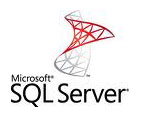
The code base for MS SQL Server (prior to version 7.0) originated in Sybase SQL
Server, and was Microsoft's entry to the enterprise-level database market, competing
against Oracle, IBM, and, later, Sybase. Microsoft, Sybase and Ashton-Tate originally
teamed up to create and market the first version named SQL Server 1.0 for OS/2 (about
1989) which was essentially the same as Sybase SQL Server 3.0 on Unix, VMS, etc.
Microsoft SQL Server 4.2 was shipped around 1992 (available bundled with Microsoft
OS/2 version 1.3). Later Microsoft SQL Server 4.21 for Windows NT was released at
the same time as Windows NT 3.1. Microsoft SQL Server v6.0 was the first version
designed for NT, and did not include any direction from Sybase.
Expert SQL Server Development with Offshore Efficiency
At An IT Solution, we provide top-notch SQL Server development services with the added benefits of offshore efficiency. Our team of experienced developers is committed to delivering high-quality solutions that meet your business needs while optimizing costs.
Why Choose Offshore SQL Server Development?
Offshore SQL Server development offers numerous advantages for businesses looking to leverage their IT resources effectively:
- Cost-Effectiveness: Reduce development costs while maintaining high standards of quality with our competitive offshore rates.
- Access to Expertise: Work with skilled professionals who have extensive experience in SQL Server development and can handle complex requirements.
- Scalability: Easily scale your development resources up or down based on your project needs without the hassle of recruitment and training.
- 24/7 Support: Benefit from around-the-clock support and development capabilities, thanks to the time zone difference.
- Focus on Core Business: Offload development tasks to experts so you can concentrate on your core business activities and strategic initiatives.
Our SQL Server Development Services
We offer a comprehensive range of SQL Server development services to cater to various business needs:
- Database Design and Architecture: Create robust and scalable database architectures tailored to your specific business requirements.
- Performance Tuning: Optimize database performance through efficient indexing, query optimization, and troubleshooting.
- Data Migration and Integration: Seamlessly migrate and integrate data from various sources to your SQL Server environment.
- Custom Development: Develop custom SQL Server applications and features to meet your unique business needs.
- Backup and Recovery: Implement reliable backup and recovery strategies to safeguard your critical data.
- Security Implementation: Enhance database security through robust access controls, encryption, and monitoring.
- Reporting and Analysis: Build insightful reports and dashboards to help you make data-driven decisions.
Our Development Process
- Requirement Analysis: We begin by understanding your project requirements, goals, and current challenges.
- Design and Planning: Develop a detailed project plan and design the database architecture and features based on your needs.
- Development: Execute the development process, focusing on quality and efficiency while adhering to best practices.
- Testing: Conduct thorough testing to ensure the functionality, performance, and security of the SQL Server applications.
- Deployment: Deploy the solution to your environment, ensuring a smooth transition and integration with existing systems.
- Support and Maintenance: Provide ongoing support and maintenance to address any issues and make necessary updates.
Unlock the Power of Offshore SQL Server Development
Partner with An IT Solution to leverage our offshore SQL Server development expertise and achieve your business objectives efficiently and cost-effectively.
Contact us today to discuss your project requirements and get started with a tailored solution that drives success.